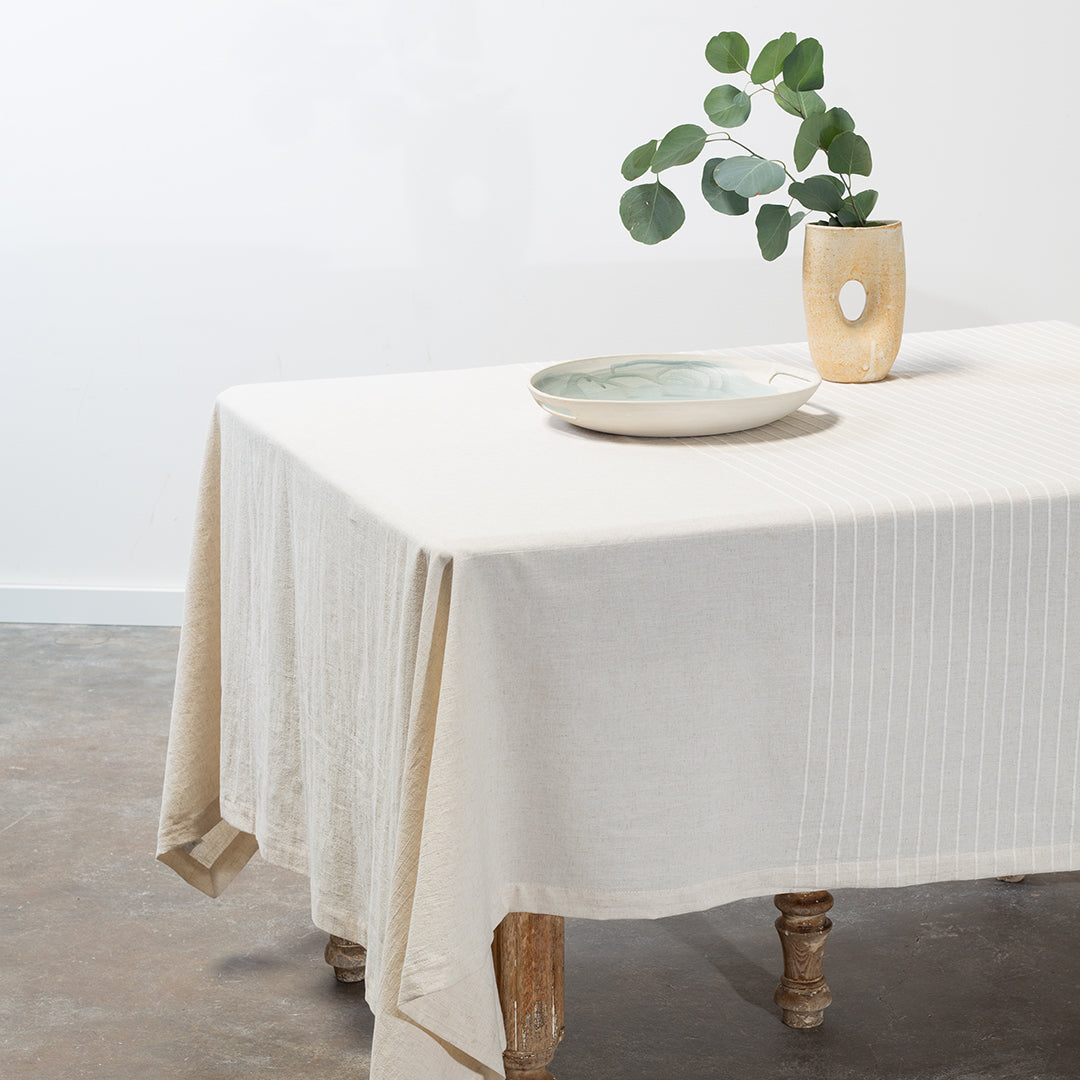Fashionable Table Runner Ideas: Change Your Eating Experience
Bed Linen Material Developments: Discovering Modern Trends and Creative Applications in Layout and Fabric Sector
From lasting manufacturing techniques to advanced weaving technologies, the development of linen is reshaping the landscape of the textile sector. As we dive right into the realms of innovative design applications and the emergence of linen blends and hybrid fabrics, a brand-new phase unravels in which bed linen's function in future textile developments takes facility phase.
Lasting Practices in Bed Linen Manufacturing
Sustainable practices in linen production have actually come to be significantly crucial in the textile sector's initiatives to lessen ecological influence and advertise ethical sourcing methods. Bed linen, a natural fiber stemmed from the flax plant, offers a series of benefits such as biodegradability, durability, and breathability. Nevertheless, standard methods of linen manufacturing can involve substantial water usage, chemical use, and energy-intensive procedures.
To address these obstacles, numerous fabric manufacturers are taking on sustainable techniques throughout the linen manufacturing procedure. This includes sourcing flax from natural ranches that avoid harmful pesticides and chemicals, applying water-efficient retting techniques to essence fibers from the flax stalks, and making use of green dyes and finishes. Furthermore, some firms are buying sustainable power resources to power their production facilities and minimizing waste through recycling and upcycling efforts.
Technical Innovations in Linen Weaving
With the growing emphasis on lasting practices in linen production, the fabric sector is now experiencing a rise in technical developments particularly intended at revolutionizing the art of linen weaving. These technologies are improving the way bed linen textiles are produced, providing boosted efficiency, high quality, and creative thinking in weaving strategies.
One of the essential technological improvements in bed linen weaving is the integration of computerized looms. These sophisticated looms are furnished with software application that permits for intricate and detailed layouts to be woven with accuracy. By digitizing the weaving procedure, suppliers can attain better uniformity and precision in their linen materials.
Additionally, improvements in thread spinning innovation have enabled the production of finer and more durable bed linen threads - table cloths. This leads to softer and smoother linen fabrics that keep their quality even after multiple usages and cleans
In addition, the advancement of green dyeing procedures and surfaces for linen textiles is getting traction. These sustainable techniques not just decrease the ecological influence however also accommodate the raising consumer demand for ethically generated textiles.
Creative Layout Applications for Bed Linen
Ingenious artistic strategies are progressively forming the imaginative style applications for bed linen in the textile market. Bed linen's all-natural aesthetic charm and capacity to blend with other materials make it a favored choice for producing one-of-a-kind garments and accessories that cater to the ecologically aware customer.
Furthermore, designers are try out bed linen in home decor, utilizing its sturdy and breathable nature to craft stylish furnishings such as curtains, bed linen, and furniture. The structure and drape of bed linen bring a feeling of refinement and comfort to interior spaces, adding a touch of beauty to modern homes.

Linen Blends and Crossbreed Fabrics
:max_bytes(150000):strip_icc()/smooth-linen-tableware-sky-24_2000x-e91a79aab4354001b5445ec12d511141.jpg)
Hybrid materials, on the other hand, take the idea of blending a step further by integrating additional elements such as metallic threads, recycled materials, or conductive fibers. These innovative textiles not just expand the layout possibilities however also introduce functional aspects like conductivity, antimicrobial residential or commercial properties, or improved longevity. Crossbreed fabrics are increasingly being used in various sectors, including style, interior decoration, and technical fabrics, where the demand for multifunctional products is on the surge.
Linen's Duty in Future Textile Innovations

In the realm of future textile advancements, bed linen is expected to be a principal in the development of sophisticated useful textiles. Developers and scientists are discovering ways to improve bed linen's integral qualities through technological improvements, such as including smart textiles, nanotechnology, and performance surfaces. These find out this here technologies intend to elevate linen's performance characteristics, making it appropriate for a more comprehensive array of applications, from activewear to safety clothing.
Moreover, the combination of linen with other natural or synthetic fibers opens up limitless possibilities for producing novel fabrics with special buildings and functionalities. By leveraging bed linen's features and discovering cutting-edge blends, the fabric market is positioned to introduce exciting developments that accommodate evolving customer demands and sustainability needs.
Final Thought
To conclude, the exploration of sustainable practices, technical innovations, innovative style applications, linen blends, and its role in future fabric advancements highlight the constant evolution of linen textile in the contemporary style and textile sector. With a concentrate on development and creativity, the versatility and green nature of bed linen make it an important material for producers click for more and designers alike, leading the way for more advancements and advancements in the area of textiles.
As we dive into the realms of innovative design applications and the appearance of linen blends and crossbreed materials, a new chapter unravels in which linen's role in future textile innovations takes facility stage.
Checking out the fusion of bed linen with other materials has actually led to the introduction of innovative blends and hybrid fabrics in the contemporary fabric industry. Bed linen blends provide an one-of-a-kind combination of the features of linen with those of various other fibers, resulting in fabrics that possess boosted residential properties such as increased longevity, improved draping, and lowered wrinkling.The evolution of linen blends and crossbreed textiles has established the stage for Linen to play an essential duty in driving future textile advancements.In the world of future textile advancements, bed linen is expected to be a crucial gamer in the development of sophisticated useful fabrics.